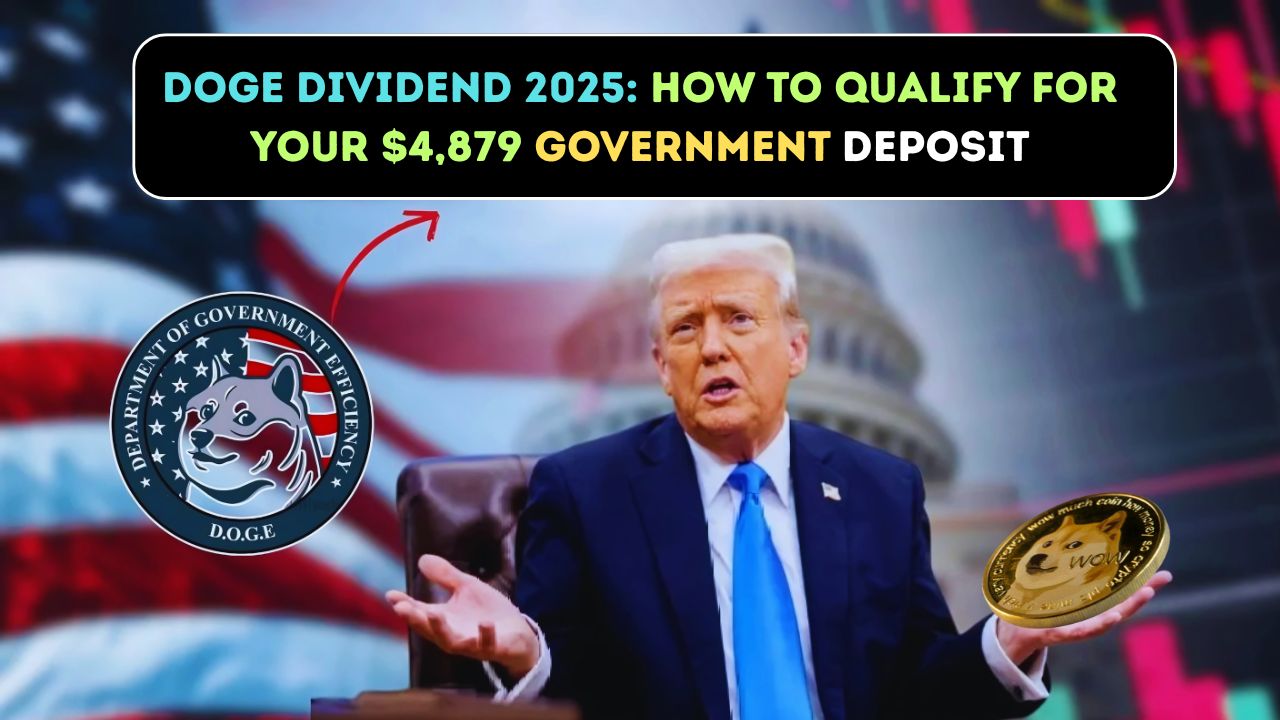This initiative proposed by the Biden Administration plans to make direct payments of $4,879 in cash to targeted households for the new stimulus policy called the DOGE Cash Boost 2025. This program is based on the savings predicted by the Department of Government Efficiency (DOGE) spending program of the government, currently supervised by Elon Musk, who is trying to reduce unnecessary expenditure. Unlike the stimulus checks in the past, this payment is designed to benefit the households that contribute to the federal tax system.

Tax Paying Households
The Cash DOGE Boost does not go to the taxation head of the single, so the main criteria is that the recipient unit has to complete a federal income tax form, and must be classified as a ‘net payer’ of federal income tax. This means, in simple terms, that the payment is tax-free to the people that do not earn or those that earn less than a specific income. This is a purposely designed program targeted at households, hence, a single payment is made to the ‘unit’/household so that greater labor supply is offered, along with lesser expenditure of the government.
Rationale for the Program
The proponents of the DOGE Cash Boost say that they can avoid the inflation created by the eagle view stimulus payments by using targeted approaches. They claim that the program is designed as a refund tax, net contributions to the economy being the only criterion to receive the reimbursement. This is to give a greater focus to tax morale construct and incentivize work by rewarding the tax payers net positive.
Economic Impact and Concerns
Supporters of the program think that the disbursal of $4,879 to the qualifying households can improve the overall household finance situation while also having a positive effect on the stock market as the families who receive the funds are expected to have a higher purchasing power. On the contrary, many economists warn about inflationary trends, despite the claim that the payments will solely use savings accumulated by the State and will not accrue new debt. The economic impacts also rely on the associated waste of government spending and the culmination of the program.
How I arrived at the amount of $4,879
The amount $4,879 comes from the assumption that DOGE aims to cut $2 trillion in federal ineffectiveness. If 20% of those savings were evenly distributed to the 79 million taxpaying households, each would receive something close to this. DOGE claims that it has saved tens of billions, but the amount needed to cover this stimulus is still unknown.
Political and Implementation Outlook
With the Cash Boost, the fate of DOGE still relies on the willingness of congress to act and the ability of DOGE to trim $4 trillion in spending. While the program could start making payments as early as 2026, there are still many unknowns. As legislation develops, taxpayers are encouraged to remain aware of the rules regarding coverage.